Living in a cold climate doesn’t mean giving up your dream of owning a pool. Many homeowners wonder if fiberglass pools are good in cold climates, especially with concerns about freezing temperatures and frost heave.
The answer might surprise you – fiberglass pools are actually one of the best options for colder regions when properly installed. Their unique properties make them particularly well-suited to handle the challenges that winter weather brings to your backyard oasis.
Contents
- Are Fiberglass Pools Good in Cold Climates?
- What is Frost Heave? How does it impact Swimming Pools?
- Methods to Protect Fiberglass Pools From Freezing Temperatures
- Fiberglass vs. Other Pool Materials in Winter
- Cost and Maintenance Advantages Over Time
- Confidence in Fiberglass for Cold Climates
- Your Next Steps Toward a Winter-Ready Pool
Are Fiberglass Pools Good in Cold Climates?
Yes, fiberglass pools are good in cold climates thanks to their flexibility and durability during freeze-thaw cycles. Unlike concrete pools that can crack under pressure, fiberglass shells flex slightly with ground movement, allowing them to withstand winter’s harsh conditions. The non-porous gel coat surface prevents water absorption that could otherwise lead to cracking when moisture freezes.
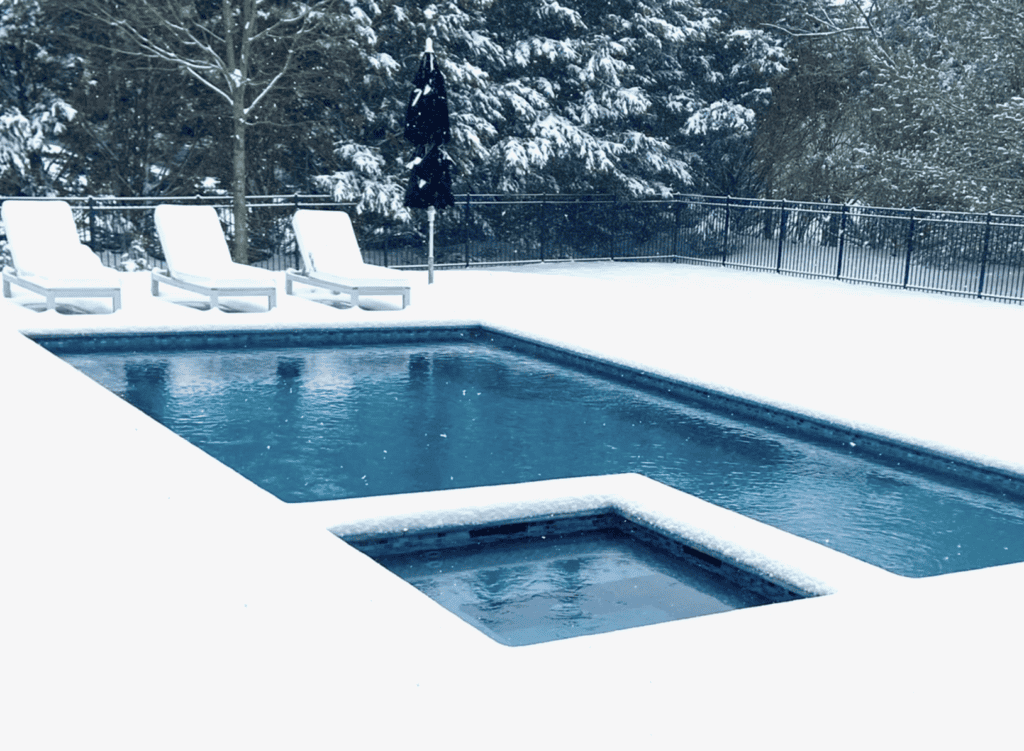
Fiberglass material has been used in cold-weather applications for decades, from boat hulls to airplane components. Your fiberglass pool shell maintains structural integrity even when surrounded by frozen ground.
What is Frost Heave? How does it impact Swimming Pools?
Frost heave occurs when moisture in the soil freezes, expands, and pushes upward, creating pressure against structures buried in the ground. This natural phenomenon can affect any in-ground pool, potentially causing structural damage if not properly addressed during installation.
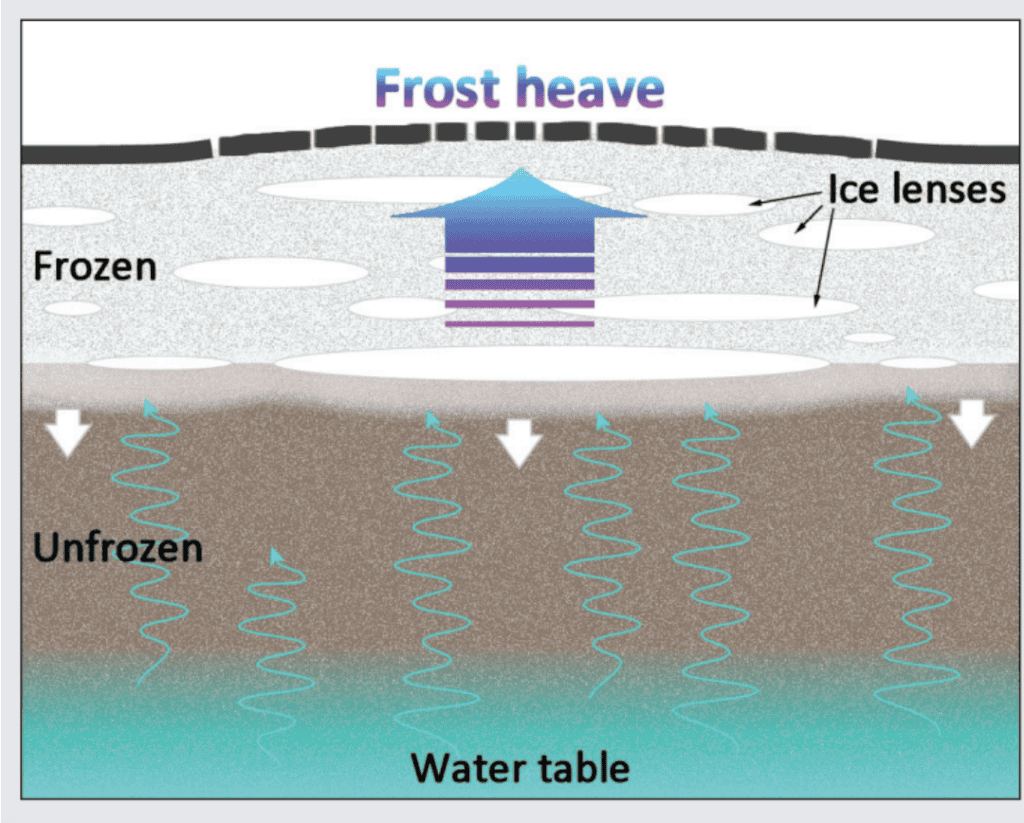
The risk varies significantly depending on your specific location, soil composition, and groundwater conditions. Northern states with deep frost lines require special attention to prevent frost-related damage. Even if you have purchased a pool heater for the winter time, you should consider this risk to your pool.
Soil Conditions That Lead to Heaving
Clay-rich soils retain more moisture and are particularly prone to frost heave compared to sandy, well-draining soils. The water trapped in clay expands dramatically when frozen, creating substantial upward pressure.
Areas with high water tables face increased risk as more groundwater is available to freeze and expand. Poorly draining soils create ideal conditions for frost heave by trapping moisture around your pool structure.
- Clay soil risk: Holds more water, expands significantly when frozen
- High water table: Provides constant moisture source for freezing
- Poor drainage: Traps water around pool structure
Proper Base and Drainage Strategies
A properly prepared base of crushed stone creates a stable foundation that minimizes frost heave potential. This material provides both stability and drainage, two critical factors in cold-climate installations.
Perimeter drainage systems direct groundwater away from your pool, significantly reducing frost heave pressure. French drains or similar systems installed during construction provide long-term protection against water accumulation.
Methods to Protect Fiberglass Pools From Freezing Temperatures
Winterizing your fiberglass pool properly is essential for cold-climate protection. Lowering the water level below skimmer openings prevents ice damage to these components.
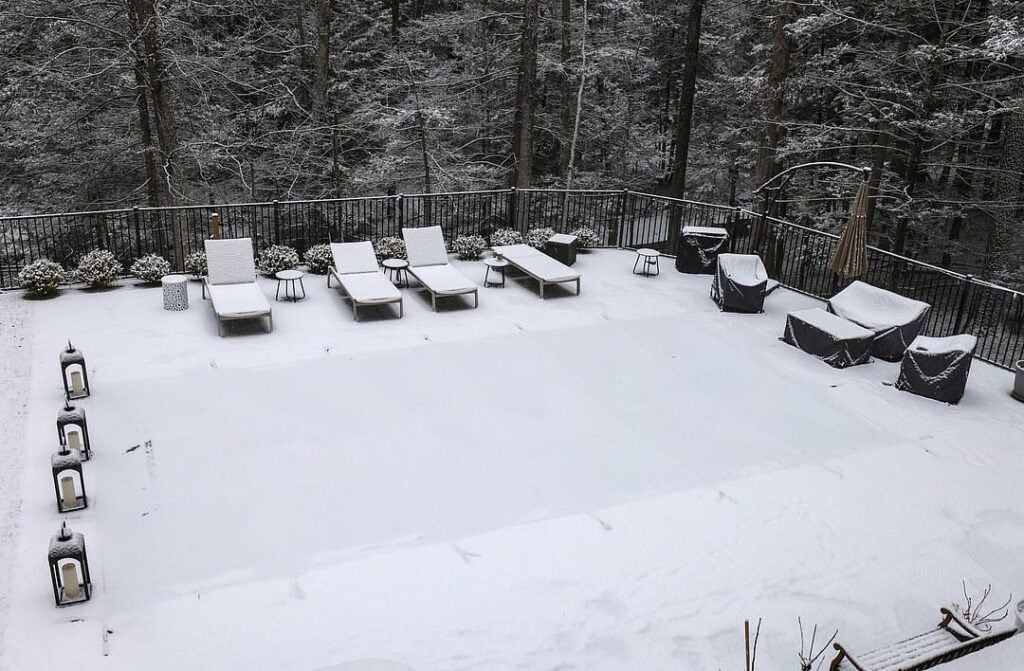
Covering your pool with a quality winter cover prevents debris accumulation and provides an additional insulation layer. The cover also minimizes evaporation and heat loss, protecting both the water and the pool structure.
For tips on reopening your pool after winter has passed, visit our pool expert blog.
Safeguarding Plumbing and Equipment
Blowing out water lines prevents freezing and potential pipe ruptures during winter months. Any water left in pipes can freeze, expand, and cause expensive damage to your plumbing system.
Insulating exposed pipes and equipment provides additional protection against freezing temperatures. Heat tape or pipe insulation sleeves are particularly important for above-ground plumbing components.
- Blow out all lines: Remove water from pipes using compressed air
- Add antifreeze: Use pool-grade antifreeze in plumbing systems
- Insulate exposed components: Wrap pipes and equipment in insulation materials
Effective Backfill Materials and Insulation
Crushed stone backfill provides superior drainage around your pool shell, minimizing water accumulation that could freeze. The angular nature of crushed stone creates stable support while allowing water to drain freely.
In extremely cold regions, adding insulation boards around the pool perimeter creates a thermal barrier. This extra protection helps maintain more consistent soil temperatures around your pool, reducing the severity of ground movement during freezing conditions.
Fiberglass vs. Other Pool Materials in Winter
Fiberglass pools outperform concrete pools in cold climates due to their flexibility and non-porous surface. Concrete pools can develop cracks as they expand and contract during temperature fluctuations.
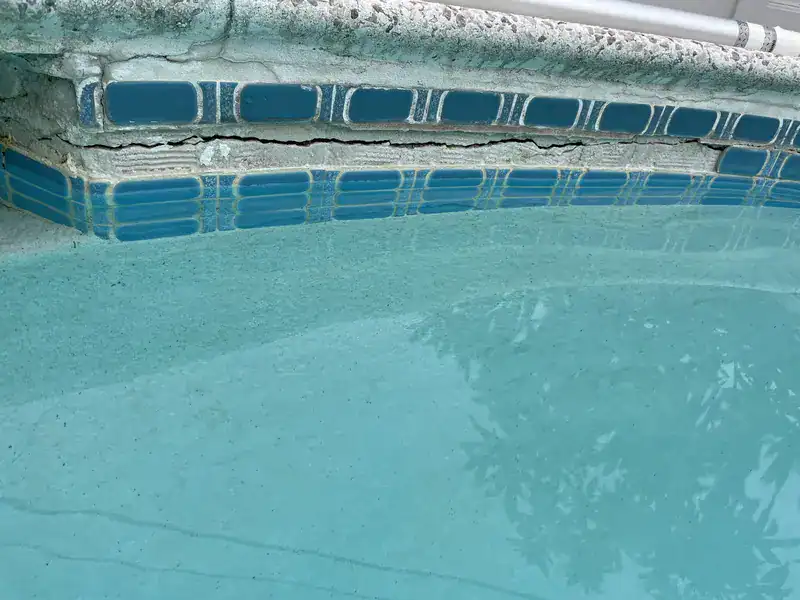
Vinyl liner pools, while initially less expensive, face unique winter challenges including liner shrinkage and potential damage from ice pressure. Fiberglass eliminates these concerns with its one-piece, flexible construction.
- Fiberglass advantage: Flexes with ground movement, non-porous surface resists cracking
- Concrete weakness: Rigid structure prone to cracking during freeze-thaw cycles
- Vinyl concerns: Liners can shrink, tear, or become brittle in cold temperatures
Cost and Maintenance Advantages Over Time
Fiberglass pools require fewer chemicals and less maintenance than other pool types, creating long-term savings. The smooth gel coat surface resists algae growth and doesn’t absorb chemicals like concrete does.
The superior insulation properties of fiberglass help maintain water temperature, reducing heating costs in colder months. Your pool retains heat more efficiently, extending your swimming season without excessive energy expenses.
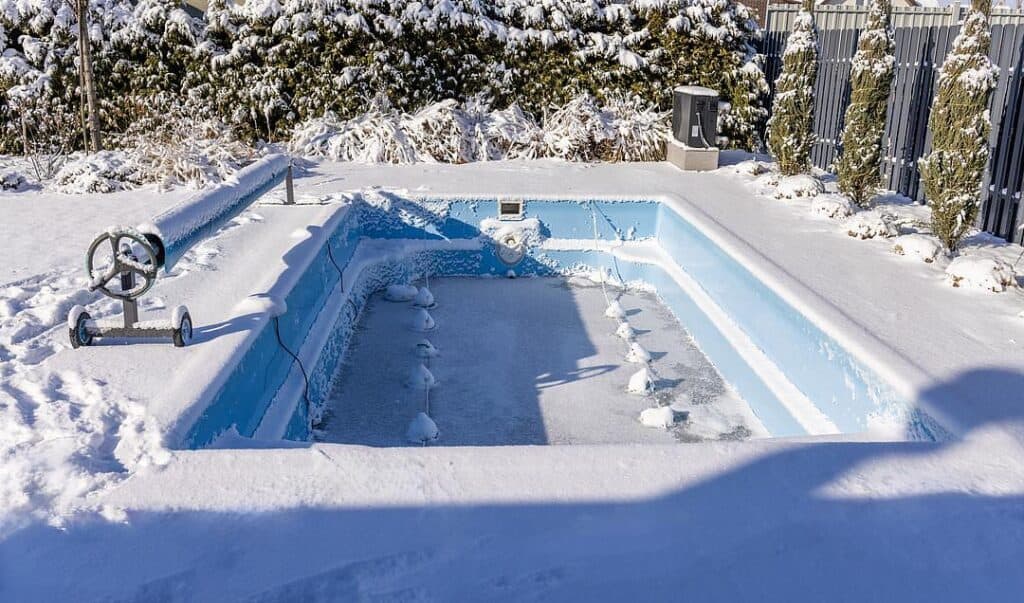
Confidence in Fiberglass for Cold Climates
Fiberglass pools have been successfully installed in northern states and Canada, proving their cold-climate durability. These winter swimming pool installations have withstood decades of freeze-thaw cycles while maintaining their structural integrity and beauty.
Working with experienced professionals ensures your cold-climate installation addresses all regional considerations. Local knowledge of frost lines, drainage requirements, and seasonal challenges leads to better installation outcomes.
Your Next Steps Toward a Winter-Ready Pool
Request a detailed quote that includes cold-climate installation specifications for your property. Understanding the complete investment helps you plan appropriately for a pool that will serve your family for decades. Request a Quote today to begin your journey toward a beautiful, durable backyard retreat that stands up to winter’s challenges.
